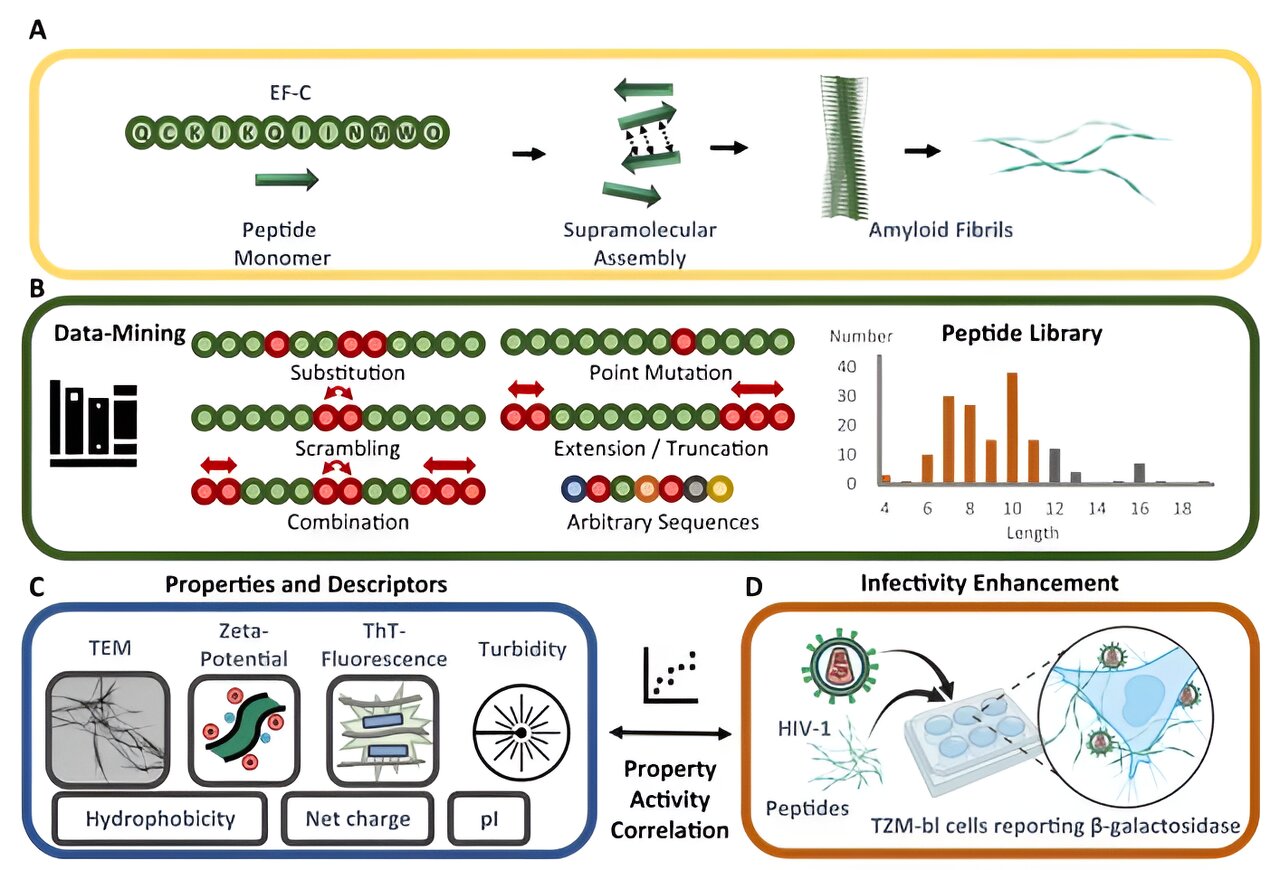Pathogenic viruses that enter the human body can dock onto cells with their tentacle-like extensions, whereupon the cell takes up the viruses. This process, which is already known and occurs in diseases such as HIV, can also be used for therapeutic approaches.
In so-called “gene therapy,” the aim is to introduce genetic material into cells. This allows a variety of applications: Defective genes in cells, such as those found in hereditary diseases, can be specifically replaced to restore the missing cell functionality. Another example are T cells, immune cells of the body, which can be reprogrammed to attack emerging cancer. In all cases, efficient transport of genetic material into the cell is necessary.
Research is now exploiting this ability of viruses to enter cells. The protein extensions that are docked onto the viral shell are an important building block for this: they ensure that the viral shells dock onto the cell.
Researchers led by director Tanja Weil and group leader Christopher Synatschke of the Max Planck Institute for Polymer Research have now taken a closer look at a small fragment of these protein extensions on different size scales. The molecule—a so-called “peptide”—consists of a chemical compound of different amino acids. Several of the molecules joined together can form long, spaghetti-like structures called “peptide fibers.”
These fibers can serve as a kind of “glue” between so-called therapeutic viruses and cell envelopes, improving the process of virus uptake into cells. Improved binding can reduce the viral dose needed for gene therapy and increase the chances of successful therapy.
2023-08-23 18:48:03
Link from phys.org rnrn
